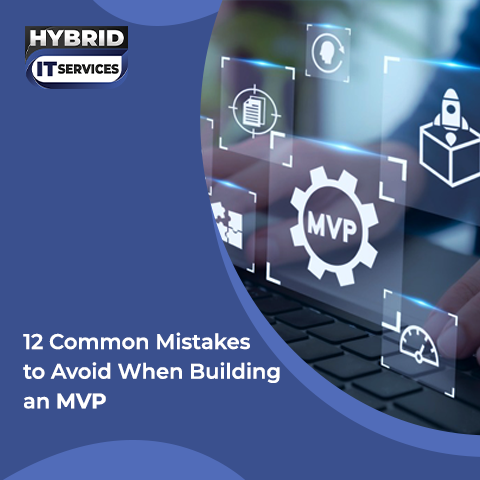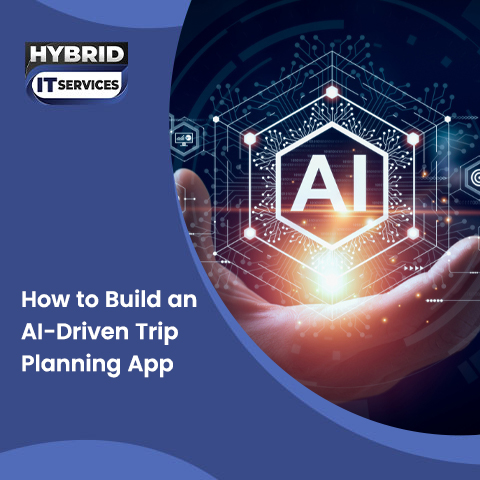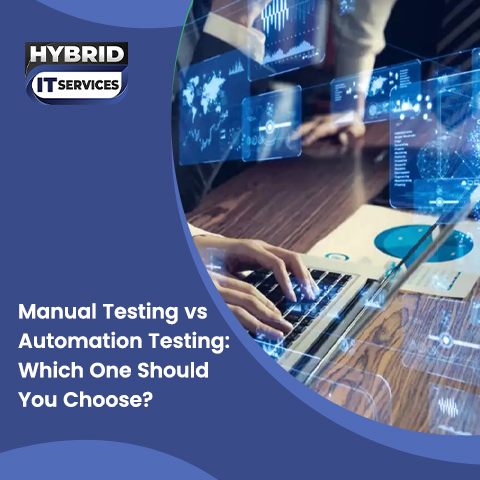While off-page SEO like backlinks and social signals has its role to play, on-page SEO forms the foundation of your site's success.
It is here at Hybrid IT Services that we realize the significance of staying in line with the changing regulatory environment of SEO. This comprehensive blog discusses the best on-page SEO techniques for 2025 that will rank your website higher, load quicker, and interact with visitors better.
Understanding On-Page SEO
On-page SEO is all the immediate work you do on your site to have it ranked as high as possible in the search engines. You're optimizing your content, your HTML elements, internal linking, and your web page structure. Unlike off-page SEO like backlinks and external signals that you can't control, on-page SEO is within your control. This is where your SEO journey starts.
Why On-Page SEO Is More Crucial Than Ever in 2025
Search engines don't just look for keyword matches anymore. They analyze context, depth of content, structure, speed, and mobile-friendliness to determine how well your page answers a user's query. That's why on-page SEO isn't exactly about keyword stuffing anymore—it's about consciously building every page to serve both the user and the search engine. You May Also Read: Complete Guide to SEO in 2025: Strategies, Tools & Best Practices
By doing your on-page SEO properly, you:
- Enhance your site's chances of being on page 1 of Google
- Make individuals interact more and reduce bounce rates
- Gain chances of showing in rich snippets
- Enhance user experience on any device
Quality, Intent-Driven Content
Content remains king in 2025 but only if nicely written, relevant, and fulfilling the intent of the search by the user. All web pages on your site ought to have a certain intent and offer valuable, unique content.
Strategic Keyword Placement and Optimization
Keyword research remains the most important aspect of SEO success. It's not merely a matter of discovering what the most searched keywords will be in 2025. You need to discover keywords that also have search intent—informational, transactional, or navigational.
You can use tools such as Google Keyword Planner, Ahrefs, SEMrush, or Ubersuggest to discover high-potential keywords for your business. Now that you have keywords, put them in the following locations:
- Page title
- Meta description
- Headings (particularly H1 and H2)
- First 100 words of content
- URL slug
- Image alt tags
- Natural flow in body content
Don't keyword stuff. Google penalizes sites with unnatural keyword repetition. Instead, semantic SEO with related terms, synonyms, and contextual word variations of the target terms.
Keep your title tag under 60 characters
Your target term is near the start. Write it well enough to get people to click through. Instead of "Home – Hybrid IT", use "Top On-Page SEO Techniques in 2025 – Hybrid IT Services".
Friendly URL Structure
A properly formatted and clean URL allows the users and search engines to quickly comprehend what a page is all about. Irrelevant words or lengthy sequences of numbers and parameters must not be added.
Rather than:
www.hybriditservices.com/page?id=123
Use:
www.hybriditservices.com/on-page-seo-techniques
Use hyphens between words and keep URLs short. Always add the anchor keyword, and don't alter URLs as much as possible to avoid existing ranks being affected unless redirected correctly.
Internal Linking and Site Structure
When writing content, attempt to include places to link to other similar pages or blog entries within your site. Use descriptive anchor text rather than generic sentences like "click here".
Make sure your site's overall structure is well-organized as well. Utilize categories and subcategories of content. A shallow hierarchy (i.e., fewer more clicks to any page) is optimal both for SEO and for users.
Mobile Optimization
Google crawls websites mobile-first nowadays, and therefore it starts with checking your mobile site when determining how to rank you. And as of 2025, if your website is not mobile-friendly, your rankings will be affected.
- Your mobile experience should be
- Fully responsive on all screen sizes
- Simple to use with touchable interfaces
- Intrusive interstitials or popups-free
- Fast to load on mobile networks
Test your mobile usability with Google's Mobile-Friendly Test tool and keep an eye on performance every so often with Google Search Console.
Page Speed and Core Web Vitals
The page speed of your site has a direct impact on user experience and SEO. Google's Core Web Vitals, launched in the past several years, have emerged as a top-ranking signal.
These three metrics are crucial:
Largest Contentful Paint (LCP): Measures loading time to main content
First Input Delay (FID): Measures delay to interactivity
Cumulative Layout Shift (CLS): Measures visual stability on load
Slow websites not only rank lower but are also frustrating to users, which means their bounce rates are astronomically high. Use Google PageSpeed Insights and GTmetrix to identify and fix speed issues. Compress images, enable browser caching, and remove unnecessary scripts to speed up loading. Explore More: How to Create an Effective SEO Strategy in 2025?
Schema Markup and Rich Snippets
Schema markup is merely one of the types of structured data that enables search engines to better understand your content. When utilized correctly, it can contribute rich snippets to your listings star ratings, event schedules, product availability, or FAQs, for example.
Schema types commonly applied in 2025 are:
- Article
- Product
- Review
- FAQ
- Local Business
- How-To
Schema can be included by plugins (in WordPress) or hardcoded using JSON-LD scripts. Google's Structured Data Testing Tool can test if your markup is working properly.
Featured Snippet Optimization
Featured snippets are the boxed text displayed above some Google search results. They're a fast path to visibility and can drive monstrous traffic to your site.
To optimize for snippets:
- Use clear headers and structured formatting (such as numbered lists or tables)
- Answer common questions directly and concisely
- Use relevant keywords in both questions and answers
- Provide definitions, steps, or comparisons
Targeting snippets doesn’t guarantee you’ll be featured, but it increases your chances significantly.
Regular SEO Audits and Content Updates
On-page SEO is not an exercise that needs to be done once. As Google changes its algorithm and the way users interact, so must your content. SEO audits done regularly are used to find and correct stale methodologies or declining performances.
Check for during auditing:
- Keyword rankings
- Bounce rate and engagement rates
- Mobile usability and page loading speeds
- Broken links or redirects
- Content freshness and accuracy
Revitalize underperforming pages by improving content, keywords, or multimedia elements. A healthy site signifies trustworthiness and relevance to Google.
Conclusion
If that sounds like too much or too technical, don't worry. Hybrid IT Services is experienced in crafting customised SEO solutions best appropriate for your business needs. We will audit, optimise, and continue maintaining your on-page SEO for you so that you can focus on running your business.
Consult today and start to rank higher, attract more traffic, and transform your website into a lead-generating machine.

.png)




